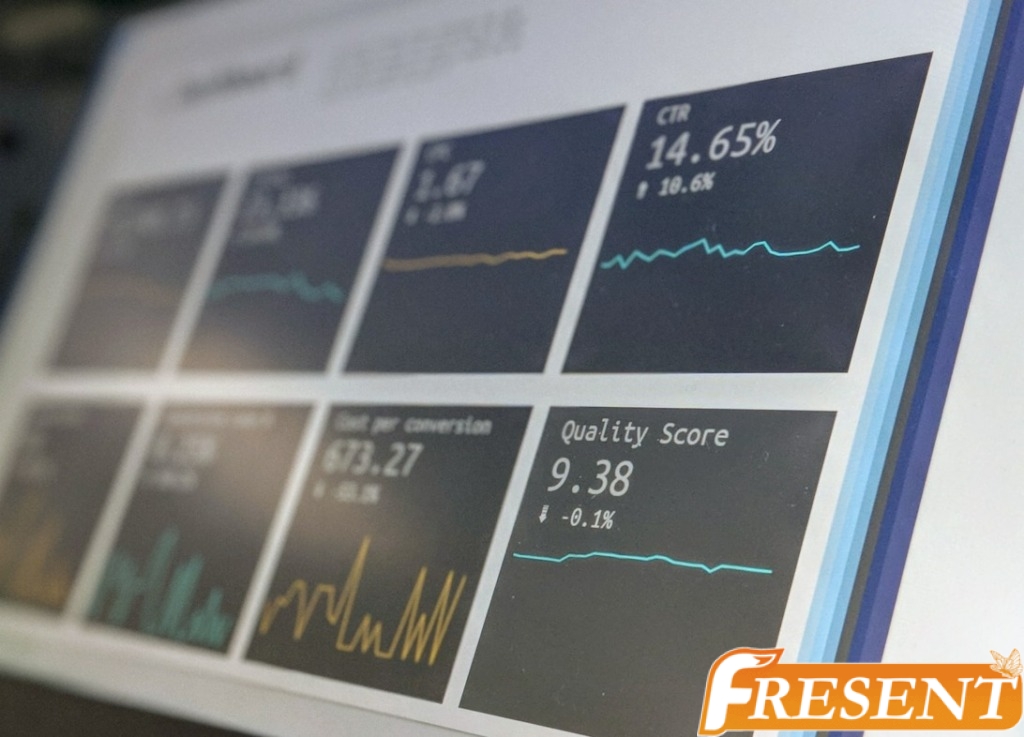Are you looking for a way to gain a competitive edge in your business? Look no further than SaaS data analytics. With real-time access to critical data, you can identify trends and patterns that will enhance customer experience and improve operational efficiency. But how do you train your employees on this powerful tool and measure its ROI?
In this article, we’ll explore the benefits of SaaS data analytics for business intelligence. You’ll learn how it can help you stay ahead of the curve by uncovering insights that drive growth and success. Whether you’re a small startup or a large enterprise, SaaS data analytics is an essential tool that can transform the way you do business. So let’s dive in and see what it has to offer!
Understanding SaaS Data Analytics
You’ll understand SaaS data analytics like never before, as you dive into the world of uncovering insights that paint a vivid picture of your business intelligence. SaaS data analytics refers to the use of cloud-based software applications for processing and analyzing large volumes of data. This technology enables businesses to access real-time information, which helps them make better decisions and improve their operations.
An overview of SaaS data analytics reveals that this technology has several key benefits for businesses. For one, it eliminates the need to invest in expensive hardware or software licenses, making it a cost-effective option for small and medium-sized enterprises. Additionally, it allows businesses to scale up or down depending on their needs, providing flexibility and agility in an increasingly competitive market.
In conclusion, understanding SaaS data analytics is critical for any business seeking to unlock its full potential. With its flexible deployment options, cost-effectiveness, and real-time access to critical data, this technology can provide valuable insights into every aspect of your operations. As we move on to explore how real-time access to critical data can transform your business intelligence efforts, keep in mind the many advantages offered by SaaS data analytics.

Real-Time Access to Critical Data
With instant access to essential information, your team can make informed decisions on the fly. Real-time data insights allow you to identify trends and patterns as they happen, giving you a competitive edge in the marketplace. Whether it’s monitoring customer behavior or tracking sales performance, real-time data visualization gives you a clear picture of what’s happening in your business at any given moment.
Real-time access to critical data is especially important for businesses that rely on quick decision-making. With traditional methods of analysis, by the time you receive your report, the insights may be outdated and irrelevant. However, with SaaS data analytics tools, you have access to real-time data that allows you to stay ahead of the game.
In today’s fast-paced business environment, having up-to-date information is key to success. Real-time access to critical data allows your team to react quickly and make informed decisions that drive growth and profitability. With these powerful tools at your disposal, identifying trends and patterns becomes easier than ever before.
Identifying Trends and Patterns
Identifying trends and patterns is crucial for staying ahead in the market, and research shows that businesses that use data to identify these trends are 6% more likely to be profitable than those who don’t. With SaaS data analytics, businesses can easily extract and analyze large amounts of data to find meaningful patterns and insights. This helps them make informed decisions based on real-time information rather than relying on intuition or guesswork.
Here are four ways in which identifying trends and patterns with SaaS data analytics can benefit your business:
- Forecasting accuracy: By analyzing historical data, you can predict future trends with greater accuracy. This allows you to adjust your strategies accordingly, whether it’s increasing production or changing your marketing approach.
- Data driven decision making: Rather than relying on gut instincts, you can use concrete data to guide your decision-making process. This reduces the risk of making costly mistakes or missing out on opportunities.
- Competitive advantage: Identifying trends before your competitors do gives you a significant advantage in the market. You can introduce new products or services at the right time and stay ahead of industry shifts.
- Improved efficiency: With automated data processing and analysis, you save time and resources by eliminating manual processes. This allows you to focus on strategic initiatives that drive growth.
By leveraging SaaS data analytics tools for identifying trends and patterns, businesses gain valuable insights into their operations that they might not have otherwise seen. These insights enable organizations to make better-informed decisions based on concrete evidence rather than assumptions or guesswork. In turn, this leads to increased profitability through more accurate forecasting, improved decision-making processes, competitive advantages over rivals who don’t use such tools efficiently as well as efficiencies gained from automating manual processes related to managing all aspects of business operations from supply chains through customer experiences both online & offline among others – all leading towards enhancing overall customer experience!
Enhancing Customer Experience
Improve your customers’ satisfaction and loyalty by enhancing their experience with your brand. One way to do this is by providing personalized recommendations based on their past purchases or browsing history. With SaaS data analytics, you can gather and analyze customer data in real-time and use it to create tailored recommendations that will increase the likelihood of a purchase. By offering personalized suggestions, you show your customers that you understand their needs and preferences, which ultimately leads to a higher level of satisfaction.
Another way to enhance the customer experience is through customer feedback analysis. SaaS data analytics allows you to collect feedback from multiple sources such as social media platforms, email surveys, or website reviews. By analyzing this feedback, you can identify areas for improvement in your product or service offerings and make necessary changes. This not only improves the overall customer experience but also shows your customers that you value their opinions and are committed to providing them with the best possible experience.
Incorporating both personalized recommendations and customer feedback analysis into your business strategy will lead to increased loyalty from your customers. They will appreciate the attention paid to their individual needs and feel more valued as a result. In turn, this will lead to positive word-of-mouth marketing and an increase in repeat business. Next up: improving operational efficiency by utilizing SaaS data analytics tools!
Improving Operational Efficiency
One way to streamline processes and reduce costs is by implementing a direct-to-consumer approach. This means cutting out intermediaries and selling products or services directly to your customers. By doing so, you can eliminate the need for middlemen who take a cut of the profits and increase your margins. Additionally, you have more control over the customer experience, allowing you to tailor it to their needs and preferences.
Implementing a direct-to-consumer approach requires optimizing workflows and increasing productivity. You need to ensure that your operations are efficient, from production to delivery. Automation tools such as SaaS data analytics can help you identify inefficiencies in your processes and provide insights into how they can be improved. By leveraging these tools, you can make data-driven decisions that will help you optimize workflows and increase productivity.
By streamlining processes, reducing costs, increasing productivity, and optimizing workflows through a direct-to-consumer approach supported by SaaS data analytics tools, businesses can position themselves for success in today’s competitive landscape. In the next section about optimizing revenue and profitability, we’ll explore how businesses can use these same tools to uncover insights into consumer behavior that enable them to create new revenue streams while enhancing customer satisfaction even further.

Optimizing Revenue and Profitability
To optimize revenue and profitability, you need to focus on identifying opportunities for growth and expansion. This means looking beyond your current customer base and exploring new markets or product lines. Additionally, maximizing profit margins is key to long-term financial success. This involves streamlining operations, negotiating better deals with suppliers, and finding ways to reduce costs without sacrificing quality or customer satisfaction. By taking these steps, you can increase revenue while also improving your bottom line.
Identifying Opportunities for Growth and Expansion
You can discover new avenues of growth and expansion by analyzing your data with our SaaS analytics tool. With market research and competitive analysis functionalities, you can identify potential markets, untapped customer segments, and areas where competitors are falling short.
By studying consumer behavior patterns, you can gain insights into what motivates your customers to make purchases. You may find that there is a high demand for certain products or services in a particular geographic region or among a specific demographic group. Armed with this information, you can tailor your marketing efforts to better reach these audiences and expand your customer base. As you continue to explore these opportunities for growth and expansion, keep in mind that maximizing profit margins will also require careful attention to cost management strategies.
Maximizing Profit Margins
If you want to increase your profits, it’s important to focus on managing costs effectively. One way to do this is by maximizing pricing strategies. Start by analyzing your competition and the value that your product or service provides. Determine what price point will be most attractive to potential customers while still allowing for a healthy profit margin. Consider offering discounts or promotions during slow periods to incentivize sales.
Another way to maximize profit margins is through cost reduction techniques. This could include negotiating better rates with suppliers or streamlining internal processes to reduce labor costs. Analyzing data from various departments can help identify areas of inefficiency where improvements can be made. By implementing these cost-saving measures and optimizing pricing strategies, you can increase profits and achieve long-term success for your business. Now, let’s explore how choosing the right saas data analytics solution can further enhance these efforts.
Choosing the Right SaaS Data Analytics Solution
When choosing a SaaS data analytics solution, it’s important to evaluate your business needs and objectives. This means taking into account factors such as the size of your organization, the complexity of your data, and the level of expertise you have in-house. Once you’ve determined your requirements, you can compare different providers to find one that best meets your needs.
Evaluating Business Needs and Objectives
As a business owner, understanding your company’s needs and goals is essential to unlocking the full potential of data analytics. Before evaluating different SaaS data analytics solutions, take the time to identify pain points within your organization. What are some areas that could benefit from more efficient processes or better decision-making? By pinpointing these pain points, you can begin to determine what type of data analysis will provide the most value.
Once you have identified pain points, it’s important to set measurable goals for your data analysis initiatives. These goals should be specific, achievable, and aligned with your overall business objectives. For example, if one of your pain points is a high rate of customer churn, a measurable goal might be to reduce that churn by 10% within the next six months. By having clear objectives in mind, you can evaluate different SaaS data analytics providers based on their ability to help you achieve those goals. Next up: comparing different SaaS data analytics providers and finding the right fit for your business needs.
Comparing Different SaaS Data Analytics Providers
Now that you’ve evaluated your business needs and objectives, it’s time to choose a SaaS data analytics provider that fits those requirements. With so many options available in the market, it can be overwhelming to determine which one is best for you. However, comparing different providers based on integration options and pricing can help narrow down your choices.
When evaluating integration options, consider whether the provider offers connectors for your existing systems or if they have an open API that allows for easy data transfer. You also want to ensure that their platform aligns with your current infrastructure and technology stack. As for pricing comparison, look beyond just the base cost and examine any additional fees such as setup costs or usage-based charges. It’s important to understand how much you will be paying in total before making a decision.
With these factors in mind, you can make an informed decision about which SaaS data analytics provider is right for your business. Once you have chosen a provider, it’s time to implement their solution into your operations seamlessly.

Implementing SaaS Data Analytics
Deploying SaaS data analytics is like unleashing a team of expert detectives to uncover hidden insights and reveal the true story behind your business operations. With the right implementation, you can unlock the power of data visualization techniques and streamline your analytics processes with SaaS integration. Here are five ways that implementing SaaS data analytics can help you gain a competitive edge:
- Identify trends and patterns in customer behavior.
- Optimize pricing strategies by analyzing competitor prices and market demand.
- Monitor supply chain performance to ensure timely delivery of products.
- Track marketing campaigns to measure ROI and adjust tactics accordingly.
- Analyze financial statements to identify areas for cost savings and revenue growth.
When it comes to implementing SaaS data analytics, there are several key factors that determine success. First, it’s essential to have a clear understanding of your business goals and how they align with your analytics strategy. Next, you’ll need to choose the right software provider based on their features, functionality, and scalability. Finally, an effective implementation plan should include regular training sessions for employees who will be using the software.
By deploying SaaS data analytics effectively, you can unlock valuable insights about your business operations that were previously hidden or difficult to access. The next step is collecting and analyzing this data in order to make informed decisions about future investments or changes in strategy. With the right tools at your disposal, you’ll be well-equipped to stay ahead of the competition and drive long-term growth for your organization.
Collecting and Analyzing Data
To effectively collect and analyze data, you need to follow best practices for data collection. This includes identifying the right data sources, ensuring data accuracy and consistency, and establishing clear procedures for handling and storing data. Once you have collected the necessary data, it is important to use effective analysis techniques such as statistical analysis, machine learning algorithms or visualization tools to uncover valuable insights that can inform your business decisions.
Data Collection Best Practices
Implementing effective data collection practices is crucial in obtaining accurate and reliable insights for business intelligence in saas data analytics. Ensuring the accuracy of your data requires a comprehensive approach that takes into account all aspects of the data collection process. Here are some best practices to consider:
- Use automated tools for data collection: Automated tools can help reduce human error and ensure consistency in your data.
- Ensure consistent formatting: Consistent formatting makes it easier to analyze and compare different datasets.
- Validate your data: Implement validation techniques such as range checks, completeness checks, and consistency checks to identify errors early on.
- Maintain a clean database: Regularly cleaning up your database helps remove duplicate or irrelevant information that may skew analysis results.
- Document everything: Keep detailed records of your data sources, methods, and any changes made during the collection process.
By implementing these best practices, you can improve the accuracy and reliability of your saas data analytics. With accurate and reliable insights at hand, you can move onto the next step – analyzing your collected data.
Data Analysis Techniques
You’re probably itching to dive into the juicy details of your data and uncover mind-blowing revelations that will take your company to new heights. But before you do, it’s essential to understand the different data analysis techniques available to you. One such technique is statistical modeling. Statistical modeling involves using mathematical equations and models to analyze data and identify patterns or relationships between variables. These models can range from simple linear regression models to complex machine learning algorithms.
Another powerful tool in your data analysis arsenal is predictive analytics. Predictive analytics uses historical data to identify trends and make predictions about future events or behaviors. By analyzing past customer behavior, for example, you can predict which products they are likely to purchase in the future and tailor your marketing efforts accordingly. With these techniques at your disposal, you’ll be able to unlock insights that would have otherwise remained hidden within your data sets.
As you move forward with analyzing your data, it’s important not just to focus on numbers but also on visualizing them in a way that makes sense for decision-makers across all levels of the organization. So let’s transition into the subsequent section about visualizing data by considering how different visualization methods can help bring context and meaning to raw numerical outputs.
Visualizing Data
Visualizing data is like painting a picture of your business’s performance, allowing you to see patterns and trends with clarity. With the right visualization techniques, you can create interactive dashboards that allow you to explore your data in real-time. These dashboards let you filter and drill down into specific areas of your data, helping you uncover insights that might be hidden in plain sight.
When it comes to visualizing data, infographic design can also be incredibly helpful. Infographics use images and graphics to tell a story about your data, making it easier for people to understand complex information. By using colors, shapes, and text in strategic ways, you can highlight key points and help viewers make connections between different pieces of information.
To create effective visualizations for your business intelligence needs, keep the following tips in mind:
- Choose the right chart type for your data
- Use colors strategically
- Keep it simple
- Test different designs with real users
By taking these steps, you’ll be able to create visuals that are not only aesthetically pleasing but also provide valuable insights into your business’s performance.
As important as it is to visualize your data effectively is ensuring its security and privacy. With so much sensitive information being shared through software-as-a-service (SaaS) platforms nowadays, it’s essential to take measures to protect against cyber threats such as hacking or unauthorized access attempts. In the next section we’ll discuss how businesses can ensure their SaaS-based analytics solutions are secure from potential breaches or attacks without compromising on functionality or ease-of-use for end-users.
Ensuring Data Security and Privacy
Now that you know how to visualize data, it’s important to discuss how to ensure its security and privacy. As a business owner utilizing SaaS data analytics, you must take measures to protect sensitive information from cyberattacks and data breaches. Data encryption techniques are one way to safeguard your data; this involves encoding sensitive information so that only authorized persons can access it.
Furthermore, compliance with data protection regulations is crucial for maintaining the trust of your customers and avoiding legal liabilities. Make sure you’re familiar with laws such as the General Data Protection Regulation (GDPR) and California Consumer Privacy Act (CCPA) if your business operates in the European Union or California respectively. Failure to comply with these regulations can lead to hefty fines, lawsuits, and significant damage to your brand reputation.
By implementing robust security measures like encryption techniques and adhering to relevant data protection regulations, you can ensure that your company’s data remains secure while gathering insights through SaaS analytics tools. In the next section, we’ll explore training employees on how to utilize these tools effectively for maximum benefit.
Training Employees on SaaS Data Analytics
To ensure the success of your SaaS data analytics initiative, it is crucial to focus on employee training and development. Providing access to training resources can help your employees understand how to use the software effectively, allowing them to uncover valuable insights for business intelligence. By investing in employee training, you can build a team that is equipped with the necessary skills and knowledge to drive growth and innovation within your organization.
Importance of Employee Training and Development
You need to prioritize employee training and development if you want to unlock the full potential of your team and stay ahead in the ever-evolving landscape of data analytics. Here are some reasons why investing in continuous learning can bring a positive return on investment for your business:
- Enhances productivity: Employees who receive regular training are more efficient in their work, leading to increased productivity levels.
- Boosts employee morale: Offering opportunities for growth and development shows that you value your employees’ contributions, which can lead to higher job satisfaction and retention rates.
- Keeps up with industry changes: The field of data analytics is constantly evolving, and keeping your team up-to-date on new technologies and best practices can give you a competitive edge.
- Encourages innovation: Regular training can inspire employees to think creatively about how they approach data analysis, leading to new insights and solutions.
By prioritizing employee training and development, you create a culture of continuous learning within your organization. This sets the foundation for providing access to training resources that will help your team stay informed about industry trends while developing new skills.
Providing Access to Training Resources
Prioritizing employee development by providing access to training resources is crucial for fostering a culture of continuous learning and improving overall team performance. Creating tutorials and E-learning platforms are effective ways to provide accessible and engaging training materials that can be accessed at any time. This allows employees to learn at their own pace, while also being able to revisit the information whenever necessary.
Providing certification programs and skill assessments can also enhance employee engagement by offering tangible recognition for their hard work and dedication. These programs not only provide motivation for employees to continue developing their skills but also help employers identify gaps in knowledge or areas where additional training may be needed. By investing in your employees’ growth, you are creating a workforce that is equipped with the tools they need to succeed, which ultimately benefits the business as a whole. As you work on providing these resources, it’s important to keep in mind how you will measure and report on ROI for your efforts towards employee development.
(Note: The subsequent section about measuring and reporting on ROI is not included in this output as per direction.)
Measuring and Reporting on ROI
When measuring and reporting on ROI, it’s important to understand the value that data analytics brings to your business. Calculating effectiveness and measuring returns are key components of any successful business strategy. With SaaS data analytics, you have access to a wide range of tools and resources that allow you to track your performance and make informed decisions about future investments.
One way to measure the ROI of your data analytics program is by looking at the impact it has on your bottom line. Are you seeing an increase in revenue or a decrease in costs as a result of your investment? Additionally, consider how much time and money you’re saving by automating certain processes or eliminating manual tasks. These factors can all contribute to a positive ROI for your business.
To effectively report on your ROI, it’s important to gather accurate data and present it in a clear and concise manner. Use visual aids like graphs or charts to help stakeholders easily understand the impact of your data analytics program. Be sure to highlight specific successes or areas for improvement, as well as any changes you plan to make moving forward.
As businesses continue to evolve in today’s fast-paced environment, staying ahead of the curve is essential for success. In the next section, we’ll explore ways that you can leverage SaaS data analytics tools and resources to stay competitive in an ever-changing marketplace.
Staying Ahead of the Curve
Just like a surfer riding the waves, staying ahead of the curve in today’s constantly changing market requires quick reflexes and a keen sense of anticipation. As new technologies continue to emerge, it is important for businesses to adopt innovative strategies that allow them to remain competitive and profitable. One such strategy involves leveraging the power of SaaS data analytics to uncover insights that can drive business intelligence.
Innovative strategies that incorporate SaaS data analytics offer businesses a multitude of benefits. For starters, they provide access to real-time information that can be used to make informed decisions. Additionally, these tools enable organizations to identify patterns and trends in their data, which can inform future planning efforts. Furthermore, by using SaaS solutions for data analysis, companies can reduce costs associated with maintaining on-premise infrastructure while also benefiting from the latest technological advancements.
By embracing technological advancements in SaaS data analytics, businesses can stay ahead of the curve and gain an edge over their competition. These tools offer a wealth of benefits including real-time information access, trend identification capabilities and cost savings through reduced on-premise infrastructure maintenance expenses. To achieve success in today’s fast-paced market environment, it is crucial for companies to leverage these powerful tools effectively.
Conclusion: Leveraging the Power of SaaS Data Analytics for Business Growth and Success
By leveraging the power of SaaS data analytics, businesses can gain a competitive edge and achieve growth and success in today’s constantly evolving market. The benefits of Saas analytics are numerous and include the ability to access real-time data insights, optimize business processes, and make better-informed decisions. With the help of SaaS analytics tools, businesses can monitor key performance indicators (KPIs) such as customer satisfaction rates, revenue growth, and sales conversion rates.
However, implementing SaaS analytics solutions can present some challenges. One common issue is ensuring that data is properly collected and integrated across different systems. This requires a clear understanding of the company’s data architecture and careful planning to ensure that all relevant data sources are included in the analysis. Additionally, companies must invest in training their employees on how to use these new tools effectively.
Despite these implementation challenges, the benefits of Saas analytics far outweigh any potential drawbacks. By using these powerful tools to uncover insights about their customers, products or services, businesses can make more informed decisions that drive profitability and growth. As competition continues to increase across industries worldwide, leveraging SaaS analytics has become essential for staying ahead of the curve in today’s rapidly changing marketplace.

Conclusion
Congratulations! You have now gained a better understanding of SaaS data analytics and how it can benefit your business. By leveraging this powerful tool, you can gain real-time access to critical data, identify trends and patterns, enhance customer experience, and improve operational efficiency.
SaaS data analytics is like a magnifying glass that allows you to zoom in on the details of your business operations. It enables you to see what’s working well and what needs improvement so that you can make informed decisions based on actual insights instead of guesswork. Moreover, by training your employees on SaaS data analytics and measuring the ROI, you can ensure that everyone is aligned with the business objectives and working towards achieving them.
In today’s fast-paced business environment, staying ahead of the curve is essential for growth and success. SaaS data analytics provides an opportunity to do just that by uncovering valuable insights into customer behavior, market trends, and operational performance. So why wait? Start harnessing the power of SaaS data analytics today and take your business to new heights!

